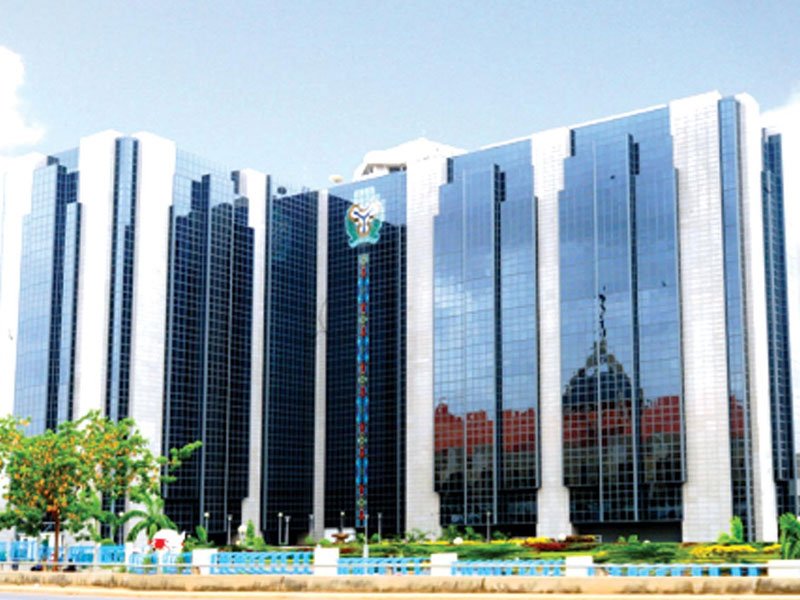
Credit to Private Sector Rises to N24 Trillion
Banking sector credit to the private sector rose by 6.4 per cent to N24.163.4 trillion at the end of February 2019, compared with the increase of 1.9 per cent and 0.9 per cent at end of December 2018 and the corresponding period of 2018, respectively.
The CBN revealed this in its economic report for the first quarter of 2019 posted on its website.
The development was attributed to the 5.9 per cent increase in claims on the core private sector.
Also, aggregate credit to the domestic economy (net), rose by 10.7 per cent to N30.518 trillion at the end of February 2019, compared with the growth of 6.3 per cent and 4.5 per cent at the end of December 2018 and the corresponding period of 2018, respectively.
The development reflected the respective increase of 30.6 per cent and 6.4 per cent in net claims on the federal government and claims on the private sector.
Net claims on the federal government rose by 30.6 per cent to N6.354 trillion at the end of February 2019, compared with the growth of 33.7 per cent and 26.3 per cent at end-December 2018 and the corresponding period of 2018, respectively.
According to the report, the development reflected the increase in holdings of government securities by the CBN. But foreign assets (net) of the banking system fell by 7.5 per cent to N17. 023 trillion at the end of February 2019. It, however, contrasted with the growth of 18.5 per cent recorded at end-December 2018. Relative to the level at the end of the corresponding period of 2018, foreign assets (net) declined by 3.2 per cent. The development was attributed to the 8.8 per cent fall in foreign asset holdings of the CBN.
Other assets (net) of the banking system fell by 1.0 per cent at end-February 2019 to negative N12.743 trillion, in contrast to the growth of 1.3 per cent and 2.4 per cent at end-December 2018 and the corresponding period of 2018, respectively.
The decline in other assets (net) of the banking system, in the review period, was attributed to the fall in the unclassified assets of the CBN.
On the other hand, currency-in-circulation (CIC) at the end of February 2019, fell by 3.8 per cent to N2.241trillion, but was in contrast to the growth of 20.9 per cent at the end of December 2018.
The development relative to the preceding quarter reflected, mainly, the 3.8 per cent and 6.6 per cent decline in its currency outside banks and demand deposit components, respectively.
The report also showed that total deposits at the CBN amounted to N14.155 trillion at the end of February 2019, indicating a 9.9 per cent decline below the level at end-December 2018.
The fall was attributed to 16.5 per cent and 14.8 per cent decline in the deposits of the private sector and the federal government, respectively.
Of the total deposits at the CBN, the shares of the federal government, banks and private sector deposits were 46.8 per cent, 34.8 per cent and 18.4 per cent, respectively.
Reserve money rose marginally by 0.4 per cent to N7.167 trillion at the end of February 2019, compared with the increase of 4.9 per cent at the end of December 2018. The development reflected the rise in total bank reserves.
“The money market was generally stable in the first quarter of 2019 despite mixed liquidity trends in the domestic money market.
“Although fiscal injections and maturing CBN bills boosted liquidity, withdrawals arising from CBN interventions in the market through Open Market Operations (OMO), moderated liquidity considerably. “Consequently, major money market rates, on average, trended below the levels at the end of the preceding quarter, reflecting ample liquidity in the system,” it stated.
Total value of money market assets outstanding in the first quarter of 2019 stood at N11.892 trillion, showing a decline of 2.5 per cent, in contrast to the 4.3 per cent increase recorded at the end of the fourth quarter of 2018. The development was attributed to the 4.1 per cent, 3.1 per cent and 25 per cent decline in the FGN Bonds, NTBs and Bankers’ Acceptances, respectively, during the review quarter.
In the month under review, interest rates moved in tandem with the level of banking system liquidity during the review period. Consequently, banks’ deposit rates were mixed, while lending rates trended downwards in the first quarter of 2019.



















